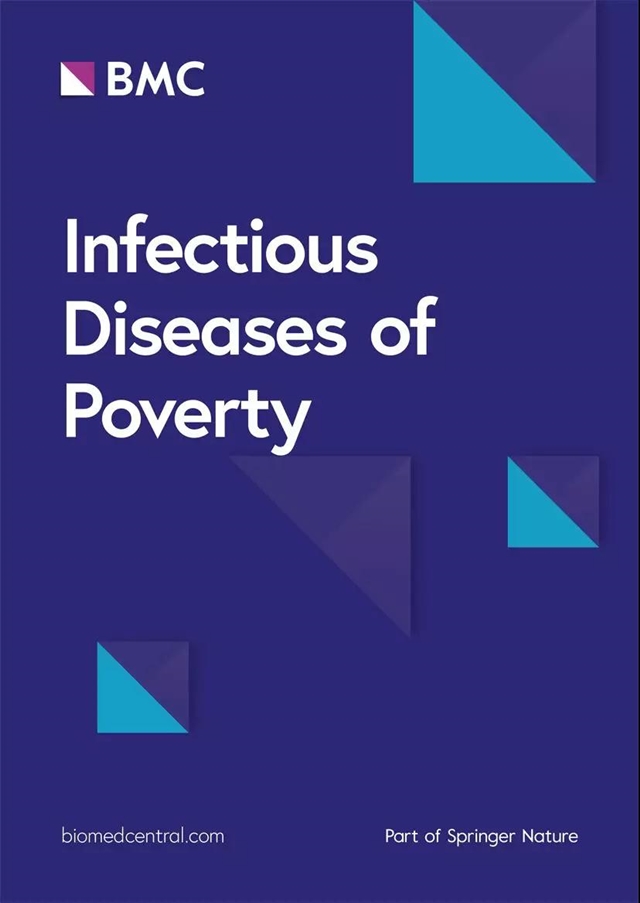Toward tuberculosis elimination by understanding epidemiologic characteristics and risk factors in Hainan Province, China
IF 5.5
1区 医学
Q1 INFECTIOUS DISEASES
引用次数: 0
Abstract
The disease burden of tuberculosis (TB) was heavy in Hainan Province, China, and the information on transmission patterns was limited with few studies. This atudy aims to further explore the epidemiological characteristics and influencing factors of TB in Hainan Province, and thereby contribute valuable scientific evidences for TB elimination in Hainan Province. The TB notification data in Hainan Province from 2013 to 2022 were collected from the Chinese National Disease Control Information System Tuberculosis Surveillance System, along with socio-economic data. The spatial–temporal and population distributions were analyzed, and spatial autocorrelation analysis was conducted to explore TB notification rate clustering. In addition, the epidemiological characteristics of the cases among in-country migrants were described, and the delay pattern in seeking medical care was investigated. Finally, a geographically and temporally weighted regression (GTWR) model was adopted to analyze the relationship between TB notification rate and socio-economic indicators. The tailored control suggestions in different regions for TB elimination was provided by understanding epidemiological characteristics and risk factors obtained by GTWR. From 2013 to 2022, 64,042 cases of TB were notified in Hainan Province. The estimated annual percentage change of TB notification rate in Hainan Province from 2013 to 2020 was − 6.88% [95% confidence interval (CI): − 5.30%, − 3.69%], with higher rates in central and southern regions. The majority of patients were males (76.33%) and farmers (67.80%). Cases among in-country migrants primarily originated from Sichuan (369 cases), Heilongjiang (267 cases), Hunan (236 cases), Guangdong (174 cases), and Guangxi (139 cases), accounting for 53%. The majority (98.83%) of TB cases were notified through passive case finding approaches, with delay in seeking care. The GTWR analysis showed that gross domestic product per capita, the number of medical institutions and health personnel per 10,000 people were main factors affecting the high TB notification rates in some regions in Hainan Province. Different regional tailored measures such as more TB specialized hospitals were proposed based on the characteristics of each region. The notification rate of TB in Hainan Province has been declining overall but still remained high in central and southern regions. Particular attention should be paid to the prevalence of TB among males, farmers, and out-of-province migrant populations. The notification rate was also influenced by economic development and medical conditions, indicating the need of more TB specialized hospitals, active surveillance and other tailored prevention and control measures to promote the progress of TB elimination in Hainan Province.通过了解中国海南省的流行病学特征和风险因素,努力消除结核病
中国海南省结核病(TB)疾病负担沉重,而有关传播模式的信息有限,研究较少。本研究旨在进一步探讨海南省结核病的流行病学特征和影响因素,从而为海南省消除结核病提供有价值的科学依据。本研究从中国国家疾病控制信息系统结核病监测系统中收集了海南省 2013 年至 2022 年的结核病报告数据以及社会经济数据。分析了结核病的时空分布和人口分布,并通过空间自相关分析探讨了结核病通报率的聚集性。此外,还描述了国内移民病例的流行病学特征,并调查了就医延迟模式。最后,采用地理和时间加权回归(GTWR)模型分析了结核病通报率与社会经济指标之间的关系。通过了解GTWR得出的流行病学特征和风险因素,为不同地区消除结核病提供了有针对性的控制建议。2013年至2022年,海南省共报告肺结核病例64042例。2013年至2020年,海南省结核病报告率的估计年百分比变化为-6.88%[95%置信区间(CI):-5.30%,-3.69%],中部和南部地区的报告率较高。大多数患者为男性(76.33%)和农民(67.80%)。国内移民中的病例主要来自四川(369 例)、黑龙江(267 例)、湖南(236 例)、广东(174 例)和广西(139 例),占 53%。大多数(98.83%)肺结核病例是通过被动病例发现的方式报告的,存在就诊延迟的情况。GTWR 分析显示,人均国内生产总值、医疗机构数量和每万人卫生人员数是影响海南省部分地区结核病高报告率的主要因素。根据各地区的特点,提出了不同的地区性措施,如增加结核病专科医院等。海南省结核病报告率总体呈下降趋势,但中部和南部地区仍居高不下。应特别关注男性、农民和省外流动人口中结核病的流行情况。通知率还受到经济发展和医疗条件的影响,这表明需要更多的结核病专科医院、主动监测和其他有针对性的防控措施,以促进海南省消除结核病工作的进展。
本文章由计算机程序翻译,如有差异,请以英文原文为准。
求助全文
约1分钟内获得全文
求助全文
来源期刊

Infectious Diseases of Poverty
Medicine-Public Health, Environmental and Occupational Health
CiteScore
16.70
自引率
1.20%
发文量
368
审稿时长
13 weeks
期刊介绍:
Infectious Diseases of Poverty is a peer-reviewed, open access journal that focuses on essential public health questions related to infectious diseases of poverty. It covers a wide range of topics and methods, including the biology of pathogens and vectors, diagnosis and detection, treatment and case management, epidemiology and modeling, zoonotic hosts and animal reservoirs, control strategies and implementation, new technologies, and their application.
The journal also explores the impact of transdisciplinary or multisectoral approaches on health systems, ecohealth, environmental management, and innovative technologies. It aims to provide a platform for the exchange of research and ideas that can contribute to the improvement of public health in resource-limited settings.
In summary, Infectious Diseases of Poverty aims to address the urgent challenges posed by infectious diseases in impoverished populations. By publishing high-quality research in various areas, the journal seeks to advance our understanding of these diseases and contribute to the development of effective strategies for prevention, diagnosis, and treatment.
 求助内容:
求助内容: 应助结果提醒方式:
应助结果提醒方式:


